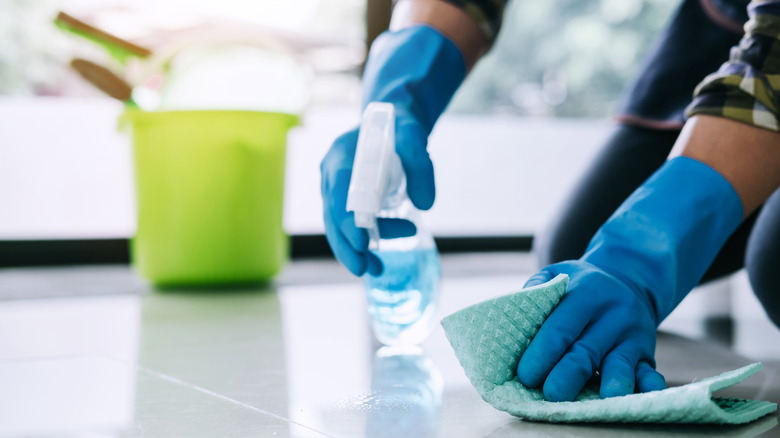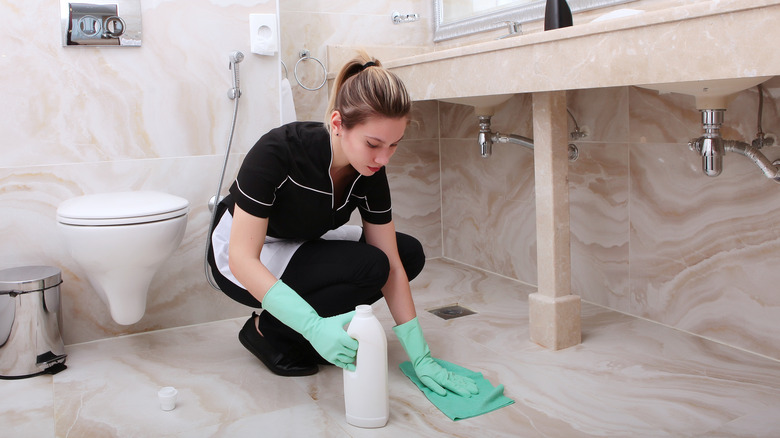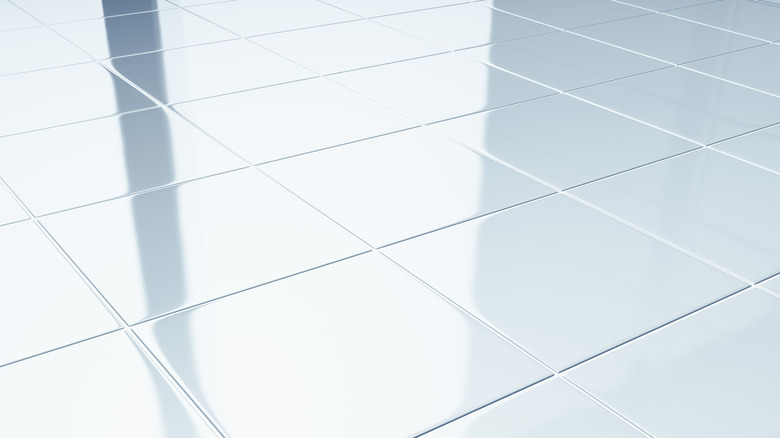Floor Types You Shouldn't Use Windex On (And Some You Should)
Windex is a popular cleaning product that has been developed beyond its original purpose as a glass cleaner to be used on various surfaces. It can clean certain countertops, appliances, faucets, bathtubs, and toilets. It can also be used on floorings like tile, sealed concrete, and hardwood floors, in specific situations. However, Windex isn't right for everything, and can cause serious damage when used to clean floor types like polished or stained concrete, vinyl, and natural stone due to the ammonia content and abrasive nature of the product.
While it's easy to grab Windex when you need to wipe down any surface, it's better to refer to the manufacturer's guidelines or seek guidance from a professional cleaner when dealing with floor materials, since they are so costly. This is especially helpful when dealing with a flooring type you don't have much experience with so you can know the best products to keep it in good shape. We're also here to help guide you, so read on to get the lowdown on what floor materials to avoid using Windex on, and which get the go-ahead.
Floor types you should avoid using Windex on
You should avoid using Windex on vinyl floors and natural stone floors. Ammonia can crack vinyl and spoil the surfaces of natural materials like marble, granite, limestone, and slate because they don't do well with acidic or abrasive cleaners. A chemical cleaner like Windex is not PH-neutral and will lead to damage after frequent use. Apple cider vinegar and water is good for cleaning vinyl, while WD-40 lubricant or jojoba oil are good for treating scratches. For natural stone floors, use softer substances and cleaners designed for the specific material.
Polished or stained concrete floors are also sensitive to the harsh chemicals in bleach, ammonia, and acidic cleaners. When they come in contact with these types of floors, a reaction can occur and they can wear down the concrete. They can also dull or stain them. Avoid Windex and use products or cleaners that are mild, natural, and pH-balanced instead. If you're still considering using Windex on your floor, test it first like any other cleaning product in a small, inconspicuous area to notice any negative effects.
Floor types you can use Windex on
Windex is generally safe to be sprayed on tiles to clean and remove smudges or streaks. It can also be used on stubborn stains on laminate floors and sealed concrete floors. This is because concrete sealers prevent water and harsh chemicals from seeping into the concrete. Ammonia-free Windex can also be used to get rid of any film or residue left by wax on hardwood floors because it is gentle enough to not warp the wood while working off the layer of residue.
To use Windex on your floors, spray it on a mop or cloth, instead of directly on the floor, and then wipe. If you have hardwood floors, this is a better approach than mixing the Windex with water and using the solution to mop, as letting water sit on wooden floors can cause damage. Overall, it's best to use Windex on your floors only once in a while, as an emergency cleaner, or to deal with stubborn floor stains. Otherwise, have a main cleaner specifically created for your floor type.


